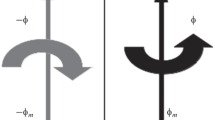Abstract—The entropic effects for the energy landscapes of macromolecules are considered. We use the ideas and methods of multidimensional geometry and topology, expansion into a multidimensional Fourier series for a potential-energy surface, and the Gaussian distribution function for the expansion coefficients to describe the interaction between conformational degrees of freedom to investigate the free energy surface in the space of dihedral (torsion) angles. We show that the free-energy surface for a macromolecule that forms a unique 3D structure in the framework of the proposed approach has the following features. The main properties of the free-energy surface can be represented in terms of a two-dimensional surface, which depends on two generalized variables. At low temperatures, the multidimensional space of torsion angles can be divided into region that belongs to the deepest central energy funnel and the region of satellite funnels. The funnels are separated by relatively high energy barriers, whose height decreases as the representative point moves up further away from the bottom of the funnel. The depths of satellite funnels decrease while the distances from the central funnel becomes larger. The funnels are surrounded by smooth entropic barriers. The height of entropic barrier is at a minimum for the central funnel, while the entropic barriers heights of satellite funnels increase as funnels move further away from the central funnel. As the temperature increases, the satellite funnels are destroyed, starting from the most distant central one. When the temperature is higher than the critical point (proportional to the specific gain in the potential energy during the formation of a unique 3D structure) the compact state becomes unstable and the global minimum of free energy disappears. As the number of interacting torsion angles (the length of the polymer chain) increases, the critical temperature becomes higher.







Similar content being viewed by others
REFERENCES
K. V. Shaitan, Biophysics (Moscow) 63, 485 (2018)
K. V. Shaitan, Biophysics (Moscow) 62, 892 (2017).
G. C. Rollins and K. A. Dill, J. Am. Chem. Soc. 136, 11420 (2014)
S. O. Garbuzynskiy D. N. Ivankov, N. S. Bogatyreva, and A. V. Finkelstein, Proc. Natl. Acad. Sci. U. S. A. 110 (1), 147 (2013).
A. V. Finkelstein and S. O. Garbuzynskiy, Biophysics (Moscow) 61 (1), 1 (2016).
A. V. Finkelstein and O. V. Galzitskaya, Phys. Life Rev. 1, 23 (2004).
J. D. Bryngelson, J. N. Onuchic, N. D. Socci, and P. G. Wolynes, Prot. Struct. Funct. Genet. 21 (3), 167 (1995).
A. Zygmund, Trigonometric Series (Cambridge Univ. Press, Cambridge, 1960; Mir, Moscow, 1965), Vol. 1.
M. V. Fedoryuk, Saddlepoint Method (URSS, Moscow, 2009) [in Russian].
J. W. Gibbs, Elementary Principles in Statistical Mechanics (Charles Scribner’s Sons, New York, 1902; Nauka, Moscow, 1982).
Ya. I. Frenkel, Statistical Physics (USSR Acad. Sci., Moscow, 1948) [in Russian].
V. A. Zorich, Mathematical Analysis (NTsNMO, Moscow, 2001), Part 1 [in Russian].
A. Yu. Grosberg and A. R. Khokhlov, Giant Molecules: Here, There, and Everywhere, 2nd ed. (World Scientific, Singapore, 2011).
A. V. Finkelstein, Physics of Protein Molecules (Izhevsk Inst. Computer Research, Izhevsk–Moscow, 2014) [in Russian].
ACKNOWLEDGMENTS
The author is grateful to M.S. Sidorenko for his help with plotting the graphs and G.A. Armeev, F.Yu. Popelenskii, and A.A. Tuzhilin, as well as other participants of the joint seminar of departments of biology and mechanics and mathematics of Moscow State University on structural biology for fruitful discussions. The author is grateful to A.V. Finkelstein for stimulating discussions and M.P. Kirpichnikov and A.T. Fomenko for attention to the work and general support.
This work was supported by the Russian Science Foundation (project no. 14-50-00029; sections Energy Surface… and Determination of Configurational Entropy…) and Russian Foundation for Basic Research (project no. 18-504-12045; section Free Energy Surface…). The bases of the dynamics of conformationally labile systems were developed in the framework of the state task of the Federal Agency of Scientific Organizations of Russia (theme 0082-2014-0001, no. AAAA-A17-117040610310-6).
Author information
Authors and Affiliations
Corresponding author
Additional information
Translated by N. Onishchenko
Abbreviations: PES, potential-energy surface; FES, free-energy surface.
Rights and permissions
About this article
Cite this article
Shaitan, K.V. Free-Energy Landscapes for Macromolecules that Form a Unique 3D Structure. BIOPHYSICS 63, 675–682 (2018). https://doi.org/10.1134/S0006350918050214
Received:
Published:
Issue Date:
DOI: https://doi.org/10.1134/S0006350918050214




